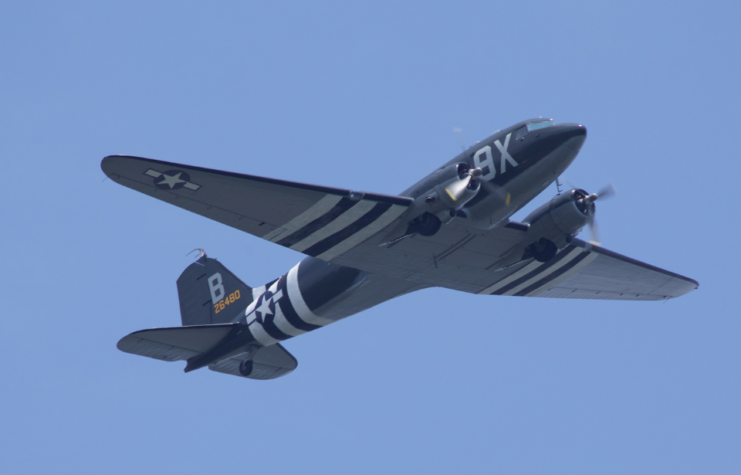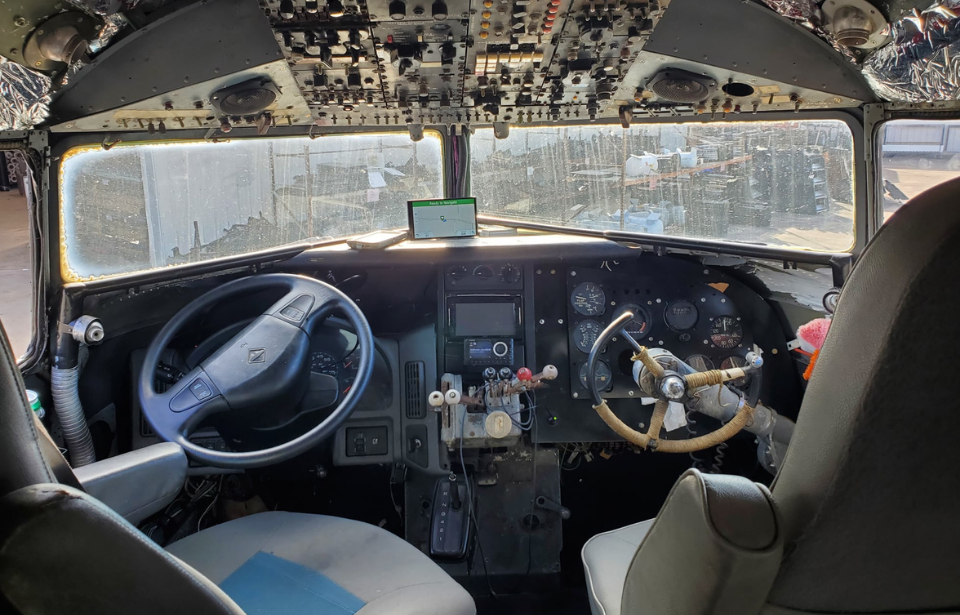Retired Air Force veteran Gino Lucci has converted a Douglas transport plane into a family RV with 300 square feet of interior space. Named the Fabulous Flamingo, it took Lucci around a year to complete the project. He says when he’s behind the wheel, its easy to forget he is in fact in a road vehicle and not a plane.
Lucci, a long-time aviation enthusiast, has dreamed of converting an aircraft into an RV since he was 12, when he watched a man do just that on a TV show. He said, “Throughout my career in the Air Force and my career now where I salvage airplanes, I would always save things, thinking, ‘someday, we’re going to do this.'”
As the owner of a business that salvages aircraft, the thought of fulfilling his childhood dream has often run through Lucci’s mind, but it wasn’t until 2018 that he finally decided to go for it. His son found a 1943 Douglas DC-3 for sale online. The aircraft had been damaged by a tornado and was no longer airworthy. The damage significantly reduced the price of the aircraft.
Lucci said that the DC-3 was the perfect aircraft for the job, as it was spacious enough to function as an RV, but small enough to fit on normal roads. His particular model is technically an R4D, the designation given to DC-3s in service with the U.S. Navy.
The DC-3
The DC-3 design is one of the most legendary aircraft of WWII that actually first began its life as a commercial aircraft.

At the time of its first flight in 1935, the DC-3 was one of the only truly capable transport aircraft in the world. The twin-engine DC-3 had a 1,500-mile range and a maximum speed of over 220 mph. It was rugged, reliable, and easy to maintain. These qualities meant the DC-3 opened up airliner routes to areas all around the world that were previously unprofitable to reach.
When WWII began, the military began claiming civilian examples for the war effort. The Douglas C-47 Skytrain was the military’s official version, of which over 10,000 were built. The C-47 was famously used to transport Allied paratroopers from England to France during the D-Day invasion.
The Fabulous Flamingo
Lucci negotiated the price of the DC-3 for a year, before finally buying it for the “cost of a used car.” He brought it to his home in Michigan and started working to turn this DC-3 into an RV, which took about one year.
“I didn’t get much sleep because I was so excited to go out and tackle what I was going to do that next day,” Lucci said.
He maintained the vehicle’s aeronautical heritage throughout, like aircraft switches, a working intercom, and a decorative co-pilot’s yoke. The dashboard from the truck chassis is in place where the instruments would be on the original aircraft.
Behind the cockpit is a kitchen, complete with a sink and tap from an aircraft, a stove, oven, and a fridge. Next is the living area, and at the back of the fuselage are two double beds and a bathroom. The only way on and off the RV is via the folding air stairs, so entering the vehicle feels like boarding an aircraft.
Lucci used a surplus delivery truck from his company as the frame and engine for the fuselage to sit on. The engine cowlings were placed over the RV’s wheels as mudguards. After completing the RV, Lucci managed to register it as a Class A motorhome that can be driven in 50 states.
While on a trip in the RV, Lucci said it starts conversations with anyone from confused people wanting to know more, to veterans who want to reminisce about their time in the DC-3 series of aircraft.
More from us: What Did WWII Combatants Think Of Each Other’s Aircraft?
Despite thoroughly enjoying the appreciation people have for the aircraft, Lucci said that he loves driving the vehicle on quiet roads the most.
“When you get out West and there is nobody around, it’s just like you’re flying.”
